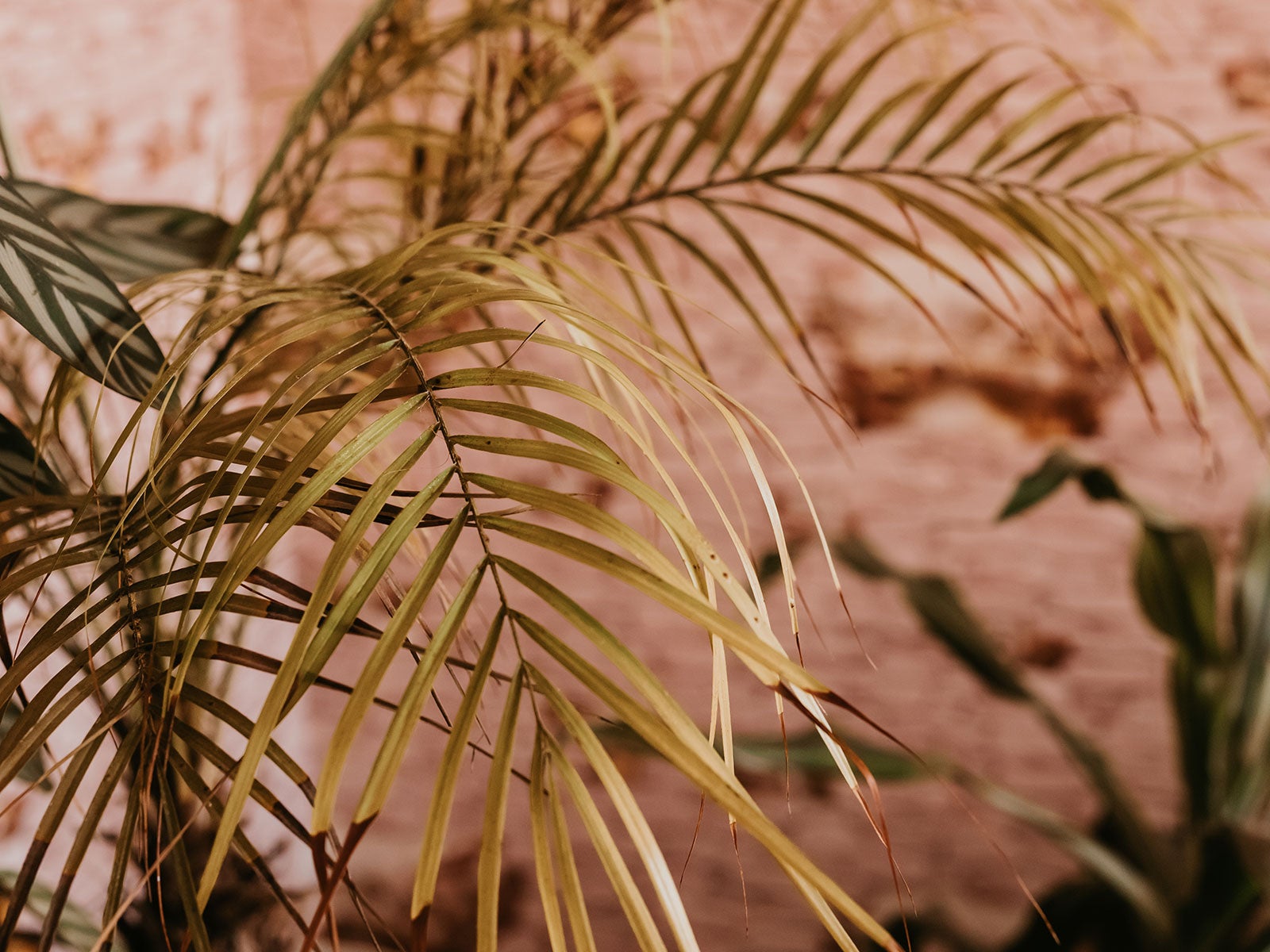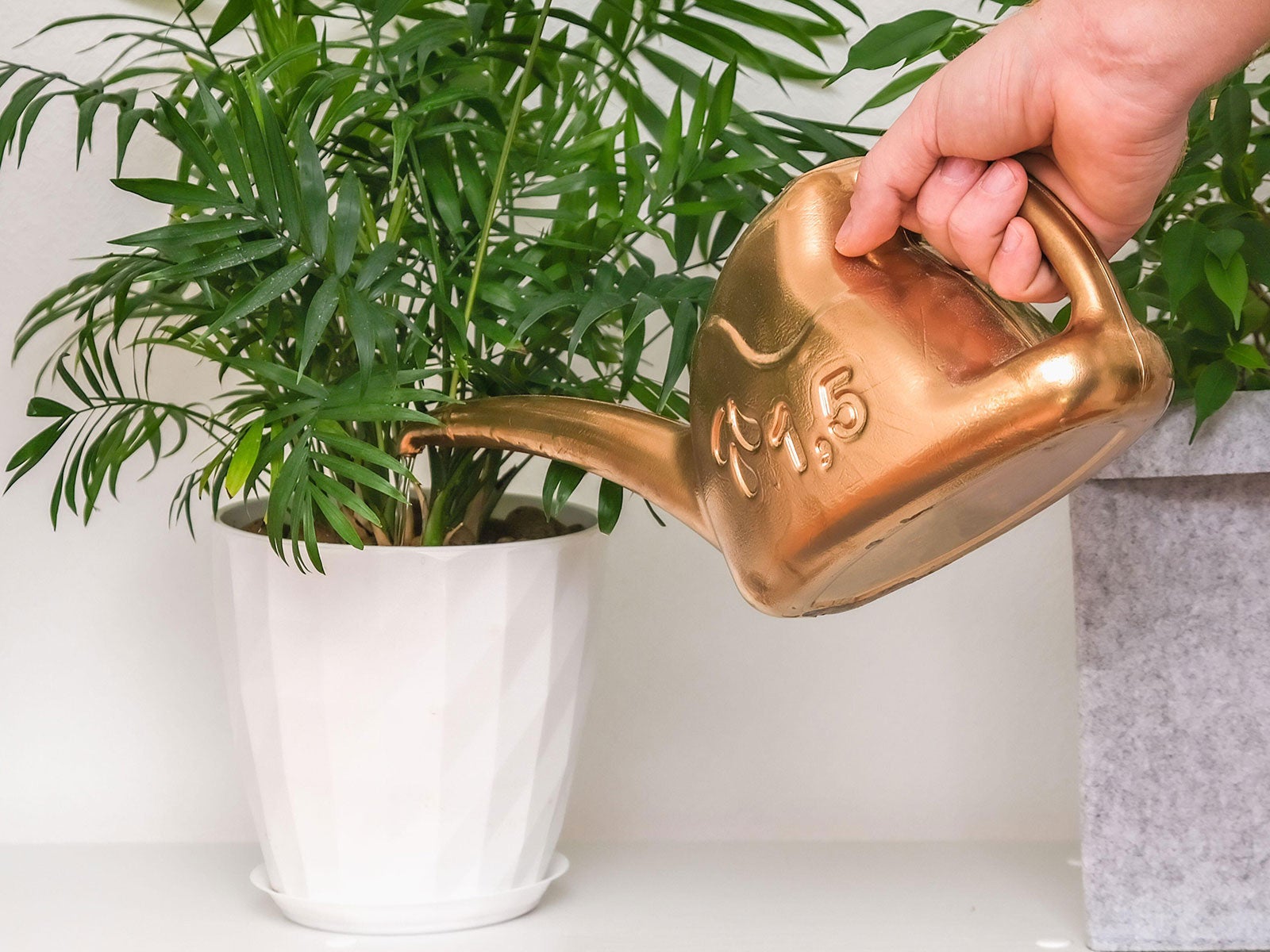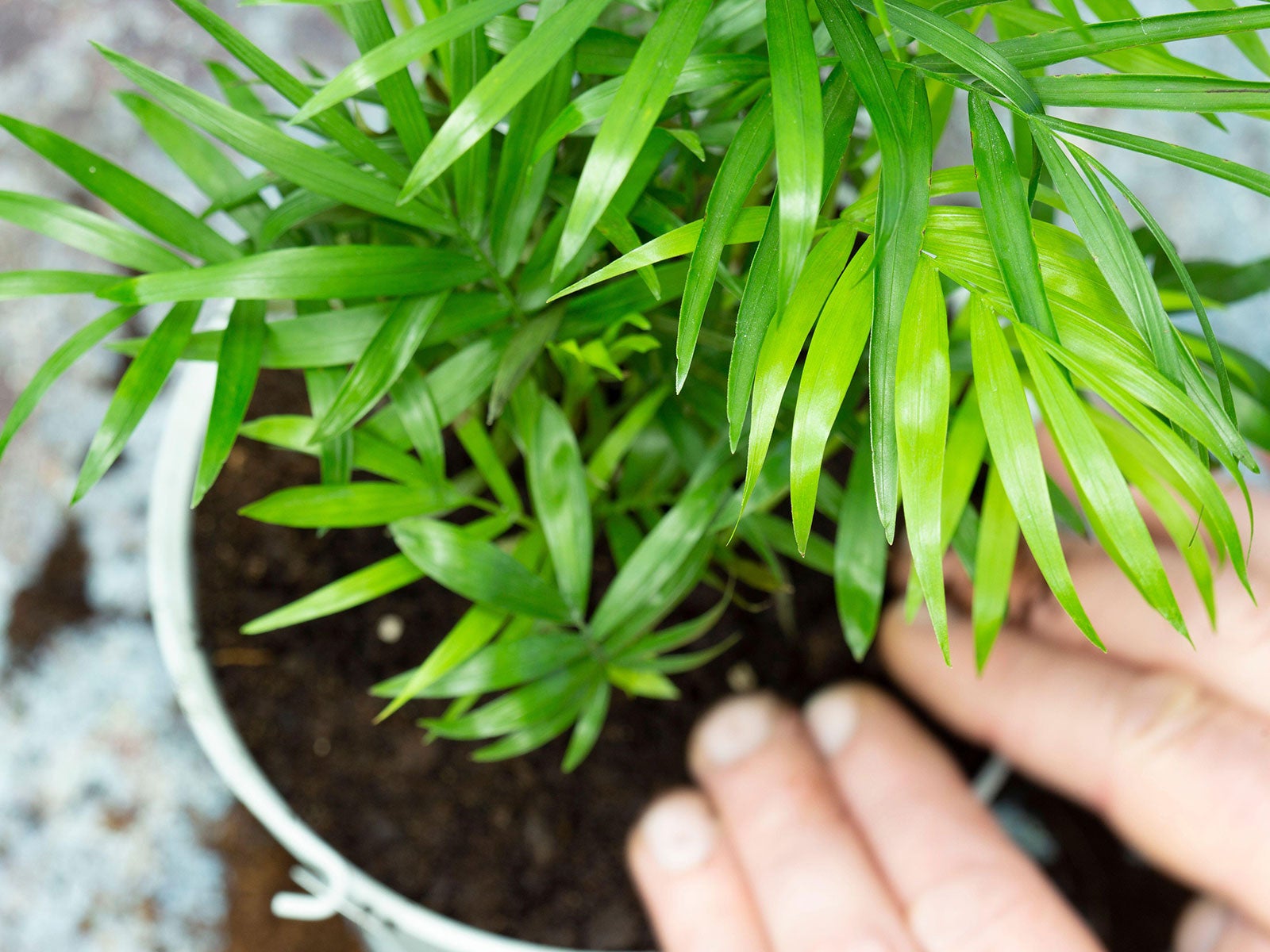Parlor Palm Problems? How To Bring Your Neanthe Bella Plant Back From The Brink


Chances are it will take a while for you to notice any parlor palm problems, because these plants are so relaxed and easygoing. Capable of thriving in low light and sometimes crowded conditions, Neanthe Bella palms (as they are also known) are relatively unfussy and well adapted to indoor culture. If you give them a little care now and then, they won't cause you much trouble.
However, as with many other indoor plants, parlor palm houseplants will occasionally become vulnerable to pests, diseases and other problems. Spider mites, scale and mealybugs can often be an issue. Cultural problems may crop up, too, such as an overwatered parlor palm that results in disease. So if you've spotted a sudden change in leaf tone or shape, don't panic. Here are some of the common problems with parlor palms (Chamaedorea elegans) – and the best ways to deal with them.
Parlor Palm Problems – and How To Deal With Them
A few parlor palm problems are no cause for alarm. Indeed, a plant with brown tips or yellow leaves can be brought back to health quite quickly. But first, you need to identify the problem. Parlor palm diseases and pests are the first things to look for when your plant looks sick. Often, insect invasions are not noticed until they are in full swing. Check the leaves and stems of your parlor palm on a regular basis, such as when watering. Then you'll catch problems early, when they are easier to treat.
A parlor palm with yellow leaves may indicate an insect infestation. Examine the undersides of leaves as well as the tops. Meanwhile, a parlor palm with brown tips on leaves might mean low humidity or over-fertilization. And if you’re wondering, 'Why is my parlor palm turning brown?' it could be down to watering too much or not enough, so check for other signs of distress.
To prevent some of these maladies, isolate new plants for two to three weeks before grouping them with older plants. Moving your palm outside for the summer will help rid the plant of pests, through its predators and rainfall. Be sure to acclimate your palm to the increased light if you do this. When your parlor palm looks out of sorts, be sure to check for the following problems, and take swift action.

Common Parlor Palm Pests
Spider Mites
Spider mites thrive in dry conditions, so regular misting and cleaning of the foliage can go a long way toward preventing or treating spider mites. Plants infested with spider mites display speckled or yellowed leaves. You'll also notice fine webbing among leaves and stems. Treat with blasts of water, miticides or insecticidal sprays. Alternatively, use a superior horticultural spray to suffocate mites. It’s a finer oil than dormant oil and can be sprayed anytime. It is also less harmful to beneficial insects when used outdoors.
Mealybugs
If you spot small oval insects with a white, cottony appearance clustering under leaves and in joints, this parlor palm problem is likely mealybugs. Their piercing mouthparts suck juices out of plants, causing leaves to turn yellow and wilt. Honeydew, produced by mealybugs and scale, is a sticky, sweet substance attractive to ants. This honeydew can lead to sooty mold, which resembles soot. Wash off bugs or, if you spot just a few, dab with a cotton swab dipped in isopropyl alcohol.
Sign up for the Gardening Know How newsletter today and receive a free copy of our e-book "How to Grow Delicious Tomatoes".
Scale Insects
Sadly, scale insects are easily missed on plants until an infestation builds up. Plants can be stunted and weakened with yellowing or wilted leaves once attacked by these small, pierce-sucking insects. Adults, typically round or oval shaped and light to dark brown, are easiest to eradicate in the crawler stage. Once they settle in and start feeding, a dome-shaped hard shell forms around them, which protects the insect.
If you notice a few of these, dab with a cotton swab soaked in isopropyl alcohol. Prune out any plant parts with heavy infestations. You can try insecticidal soap and chemical insecticides made with pyrethrins on crawlers. Superior horticultural oils work on adults and crawlers. Systemic insecticides, which move from the roots into the stems and leaves, are effective against the adult stage when it feeds.
Common Fungal Diseases
Leaf Spot
You can identify Helminthosporium fungal leaf spot (Bipolaris setariae and Exserohilum rostratum) by its spots. This parlor palm problem manifests as small, reddish brown to black spots which cover the frond surface. The spots are frequently surrounded by yellow halos. To control the disease, take extra special care not to wet the foliage.
Stem Blight
Yellowing of basal fronds, black spots on the stem, a gummy discharge and pink-orange fungal spores are all signs of Gliocladium stem blight (Gliocladium vermosceni). This condition is also known as pink rot and is a particular affliction of indoor palms. If severely affected, the fronds of affected parlor palms will quickly die. Apply a fungicide to protect open wounds.
Root Rots
If you see a blackening of the plant roots along with brown or yellow foliage, this is likely root rot (Fusarium, Rhizoctonia, Pythium, Phytophthora spp.). An overwatered parlor palm is probably at the bottom of this problem. These houseplants are highly sensitive to overwatering. Keep soil moist but not saturated. To save a plant, repot in fresh soil and a clean container. Brown, dried out leaves can also indicate under-watering or low humidity – so check the soil and roots carefully.

Physiological Parlor Palm Problems
Magnesium Deficiency
Sometimes parlor plant problems occur either because of missing nutrients or a buildup of the wrong nutrients. For instance, magnesium deficiency is common because not all fertilizers include it. Signs to look for include chlorosis (yellowing) at the tips of leaflets, moving inward. Magnesium is vital to plant growth and health. Supplement your regular feeding routine with a fertilizer that contains magnesium.
Fluoride Toxicity
It sounds incredible, but parlor palms are sensitive to flouride, which is present in tap water. Depending on how you water your plants, this could be building up without your notice. Fluoride toxicity can cause brown tips on leaves. Avoid uses of fluoride, such as in superphosphate in soil mixes, and rethink how you water your palm. Maintain a pH between 6 and 7 to prevent sensitivity to a low level of fluoride.
Over-Feeding
Brown tips of lower leaves can also be attributed to overfertilization in houseplants. This is perhaps one of the most likely problems you will face when growing parlor palms. Fortunately, it's easy to rectify the damage simply by checking how (and how often) you feed your houseplants. You only need to fertilize once or twice during the growing season to keep your parlor palms well nourished and healthy.
Please note: Any recommendations regarding the use of chemicals are for informational purposes only. Specific brand names or commercial products or services do not imply endorsement. Chemical control should only be used as a last resort, as organic approaches are safer and more environmentally friendly.

After graduating from Oklahoma State University with a degree in English, Susan pursued a career in communications. In addition, she wrote garden articles for magazines and authored a newspaper gardening column for many years. She contributed South-Central regional gardening columns for four years to Lowes.com. While living in Oklahoma, she served as a master gardener for 17 years.